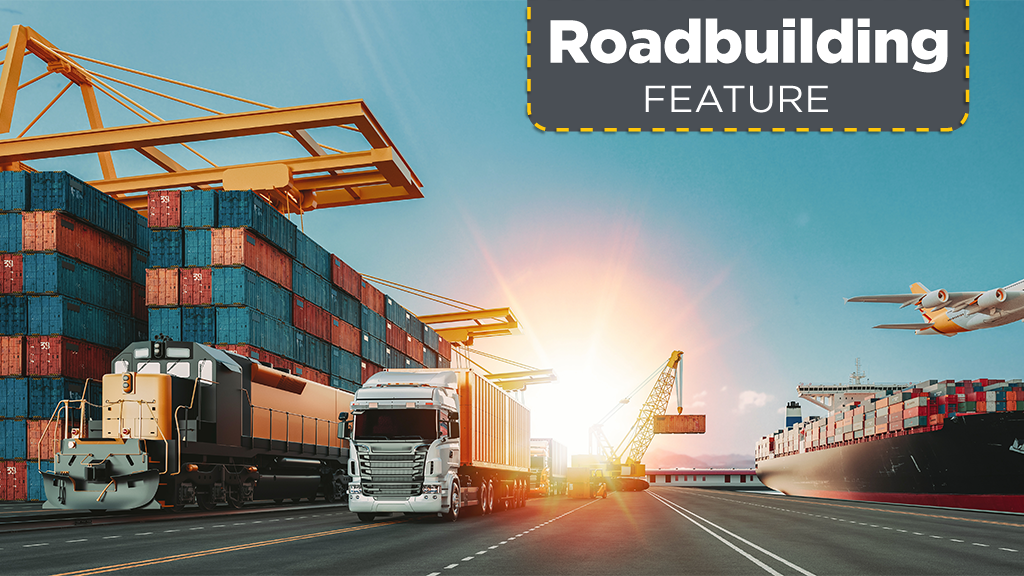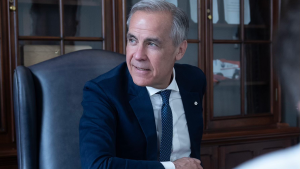Canada’s trade competitors are beating us and we need to start doing better now.
So says Mary Van Buren, president of the Canadian Construction Association (CCA).
She was speaking at a trade panel, Harnessing Trade to Grow Canada’s Economy, at a recent Western Canada Roadbuilders and Heavy Construction Association (WCR&HCA) conference.
“We haven’t been keeping pace, we’ve lost our focus,” said Van Buren.
“Canada has been under-investing in trade-enabling infrastructure, anything that can move Canadian products to market, such as roads, ports, distribution centres, railroads and border crossings.”
Investment in trade infrastructure in this country has been very inconsistent over the years, going up and down without any perceptible pattern.
“Canada needs to adopt an infrastructure policy that’s more stable and even,” Van Buren said.
Infrastructure is important because Canada is more dependent on trade than many other countries and it’s what pays for our high standard of living.
“In 2019, international trade’s share of the Canadian economy was 65 per cent, compared to 46 per cent for Australia and 26 per cent for the U.S.,” said Van Buren. “And even though Australia is less dependent on trade than Canada, it has been investing in trade infrastructure double per capita what we have been spending.”
CCA says Canada must develop a long-term infrastructure plan that is guided by an independent, apolitical, Canadian Strategic Infrastructure Council.
It says the funding allocation model for infrastructure investment needs to change from intense scrutiny of one-off projects identified by provinces, municipalities, or Indigenous communities, to a robust, longer-term asset management plan.
“Canadians need to understand that investment in trade infrastructure is investment in Canada,” said Van Buren. “It provides all the things we want and need and, too often, take for granted – health care, education, clean water, community centres, shorter commutes on better roads, and better, more efficient airports.”
In addition to Van Buren, other speakers on the trade panel were Perrin Beatty, president and CEO of the Canadian Chamber of Commerce; Greg Orbanski, chair of WCR&HCA; Brad Wall, former premier of Saskatchewan; and Gary Mar, president and CEO of Canada West Foundation. Panel moderator was Chris Lorenc, president and CEO of th WCR&HCA.
Said Mar: “In 2010, the World Economic Forum (WEF) did a survey of its members. It found that Canada ranked 10th in the world based on the reliability of its trade infrastructure, as perceived by our customers.”
By 2022, however, Canada had dropped to number 32 on the list.
“What that means is that our customers had become less confident in Canada’s ability to move our products to market,” he said.
In the same period the United States dropped from 12th to 14th place.
“The whole U.S. is up in arms about this,” said Mar. “It has started investing billions of dollars in trade infrastructure. Americans know that if you can’t move it, you can’t sell it.”
Trade infrastructure is critical to Canada’s prosperity, says Mar, especially Western Canada, which is dependent on agricultural and energy exports.
“Two-thirds of Canada’s Gross Domestic Product (GDP) is derived from trade,” said Mar. “If Canada is going to increase the size of our economy, developing a strong and resilient trade infrastructure needs to become a national priority, because trade produces the money that buys the things that Canadians want.
“I put it this way, invest in the trade infrastructure that you need to have so you can pay for the services you want to have.”
Mar says Canada doesn’t yet have, but needs to have, a national infrastructure plan.
“We should always have a pipeline of projects ready to go, so that when one development ends, we can immediately redeploy workers and resources to a new one,” he said.
The conference, which took place in February in Hawaii, was called Stronger Together.
Like the trade panel at which Van Buren and Mar spoke, some of the business sessions were about Western Canada’s role in global trade, harnessing trade to grow the economy and federal/national advocacy priorities.
They dealt with how the WCR&HCA and member associations are working with national business and stakeholder organizations to advance advocacy for a national plan for trade corridor infrastructure.
Much of the discussion was based on a 2022 Canada West Foundation report called From Shovel Ready to Shovel Worthy, to which the WCR&HCA contributed.











Spot on observations by Mary Van Buren. Canada needs need a sustained, strategic, predictable and incremental nation building strategy, that invests in Canada’s trade corridors harnessing investments in trade to grow our national economy.